x86汇编语言基础1
x86汇编语言基础1
为什么要学习机器码?
- Many years ago, people write programs with machine code
- Nowadays, people write programs with high-level languages mainly for productivity and portability reasons
- To write a program that runs is easy
- To write a program that runs well (reliable and efficient), you need to understand how the machine execute programs
相关定义
Architecture (instruction set architecture - ISA)「体系结构(指令集体系结构-ISA)」: The parts of a processor design that one needs to understand to write assembly code
- Examples: instruction set specification, registers「指令集规范,寄存器」
- We will mainly focus on the x86-64 architecture there
Microarchitecture「微体系结构」: Implementation of the architecture
- Examples: cache sizes and core frequency「体系结构的实现」
Code Forms
- Machine Code「机器码」: The byte-level programs that a processor executes「处理器执行的字节级程序」
- Assembly Code「汇编语言」: A text representation of machine code「机器代码的文本表示」
From high-level language to assembly
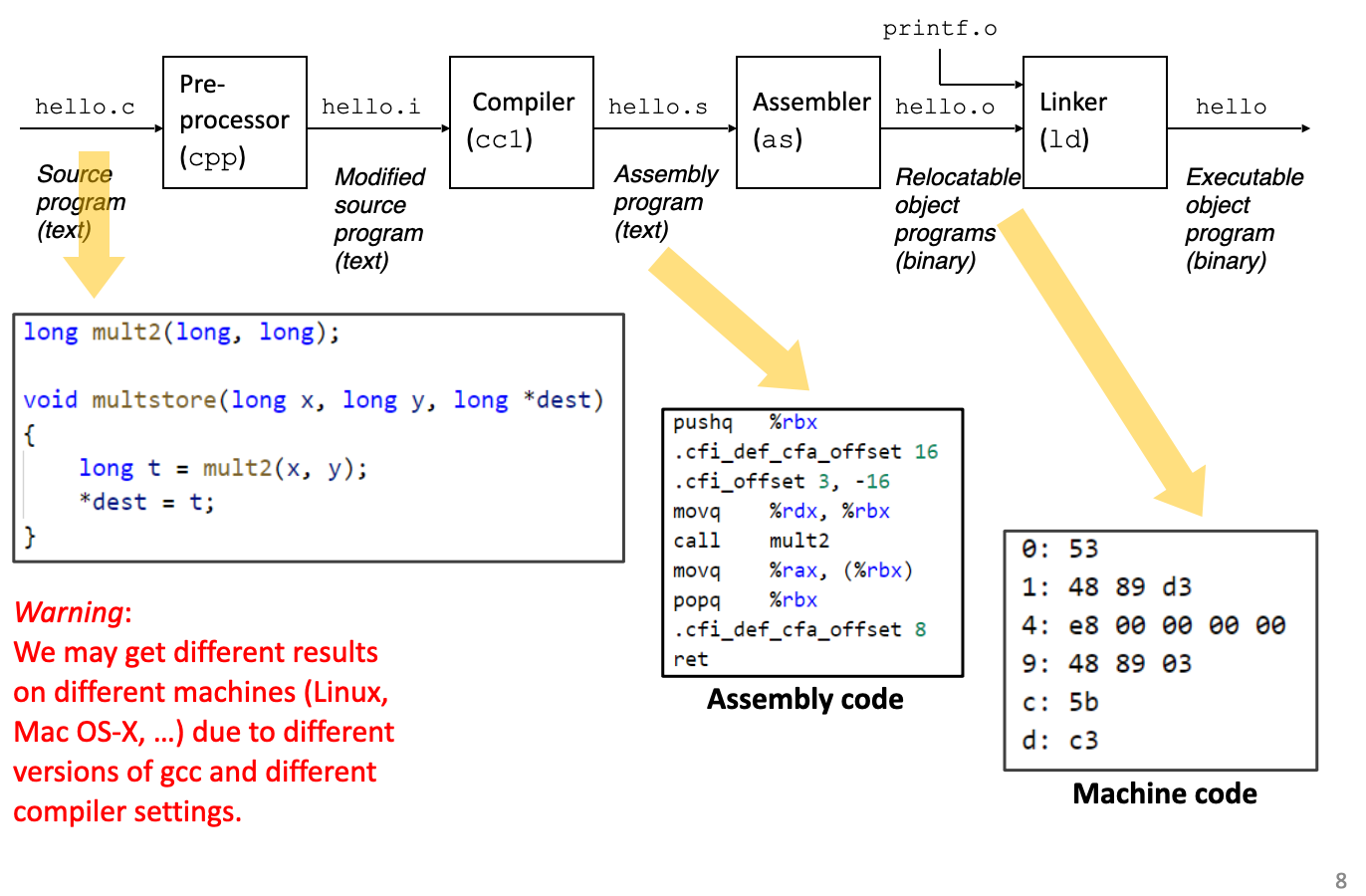
Assembly programmer’s view
Programmer-Visible State
- PC: Program counter
Address of next instruction
- Called “EIP” (IA32) or “RIP” (x86-64)
Register file
- Memory inside the CPU
- Used for instruction execution「用于指令执行」
Condition codes
- Store status information about most recent arithmetic operation「存储有关最新算术运算的状态信息」
- Used for conditional branching「Used for conditional branching」
Memory
- Byte addressable array
- Code, user data, (some) OS data
- Includes stack used to support procedures
Machine instruction example
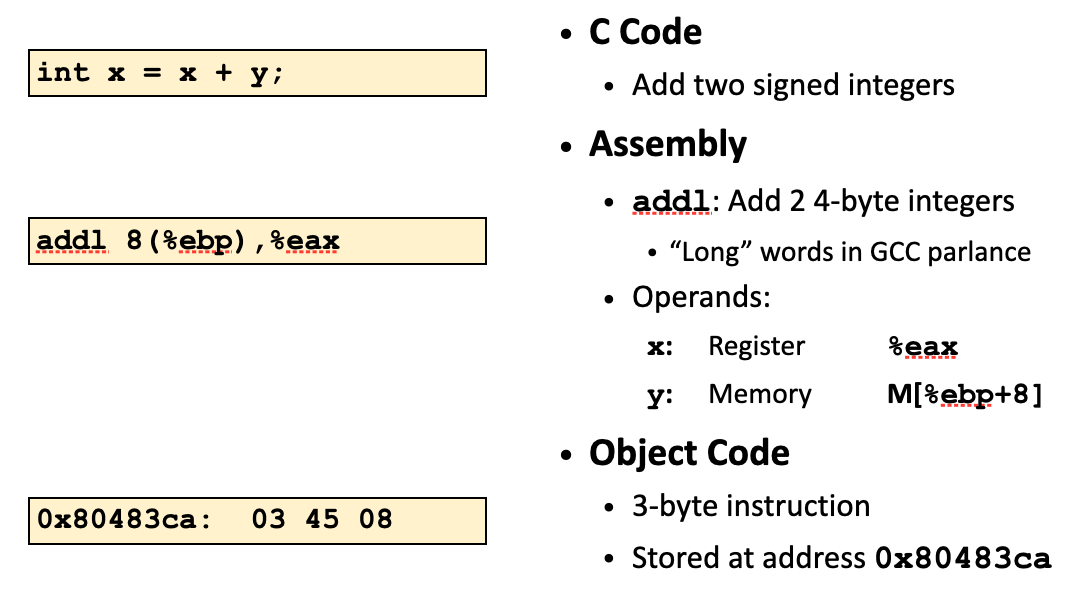
Data types
“word” in x86-64 ISA
Word: 16 bits, 2 bytes
Double words: 32 bits, 4 bytes
Quad words: 64 bits, 8 bytes
C declaration Intel data type Assembly code suffix Size (bytes) char Byte b 1 short Word w 2 int Double word l 4 long Quad word q 8 char * Quad word q 8 float Single precision s 4 double Double precision l 8
注明:在不同的ISA架构中,word的长度不同
“word” in MiPS-x64 ISA
- Word: 32 bits, 4 bytes
- Double words: 64 bits, 8 bytes
X86-64 registers
寄存器图示
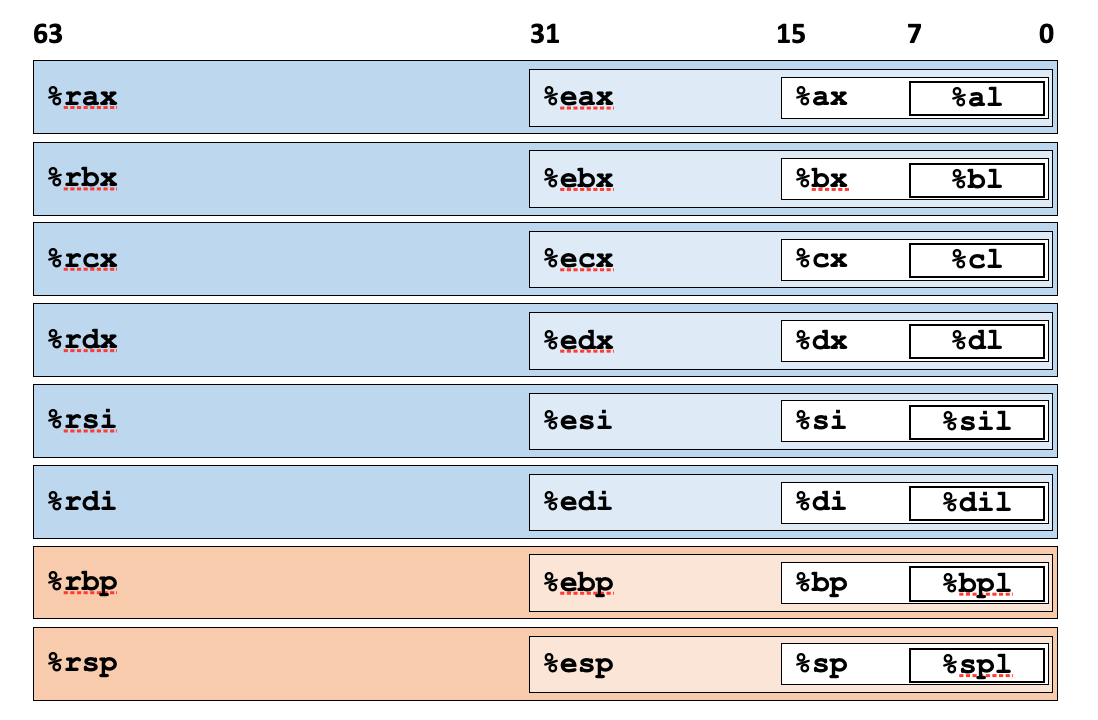
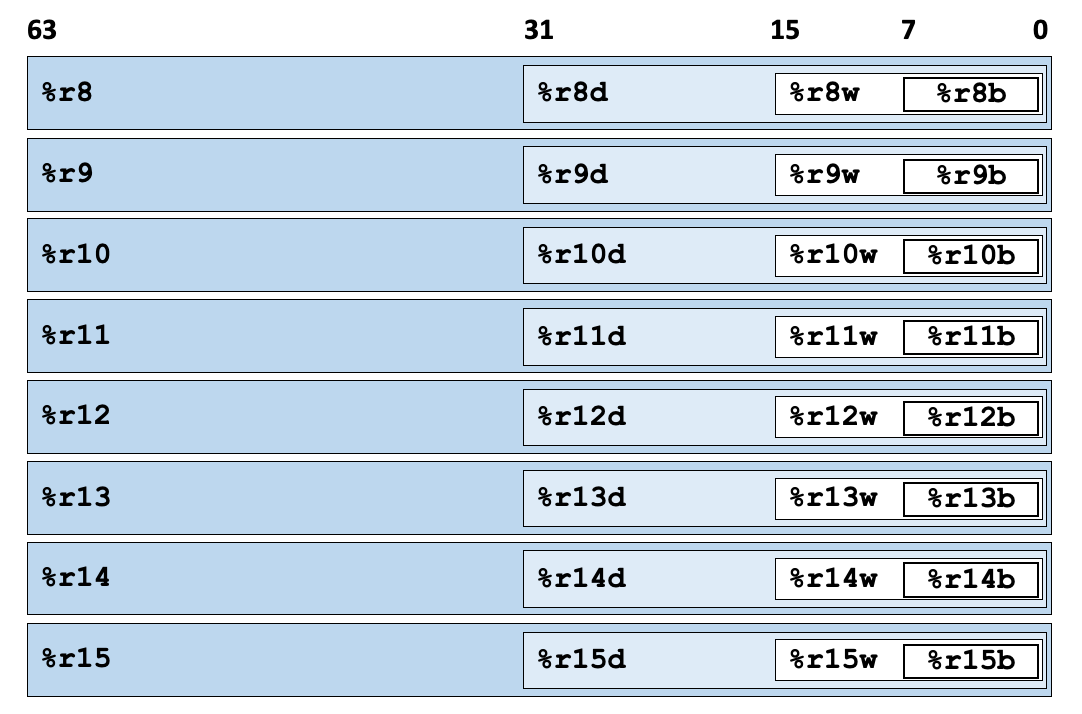
寄存器的兼容实现
64位系统向下兼容的原因
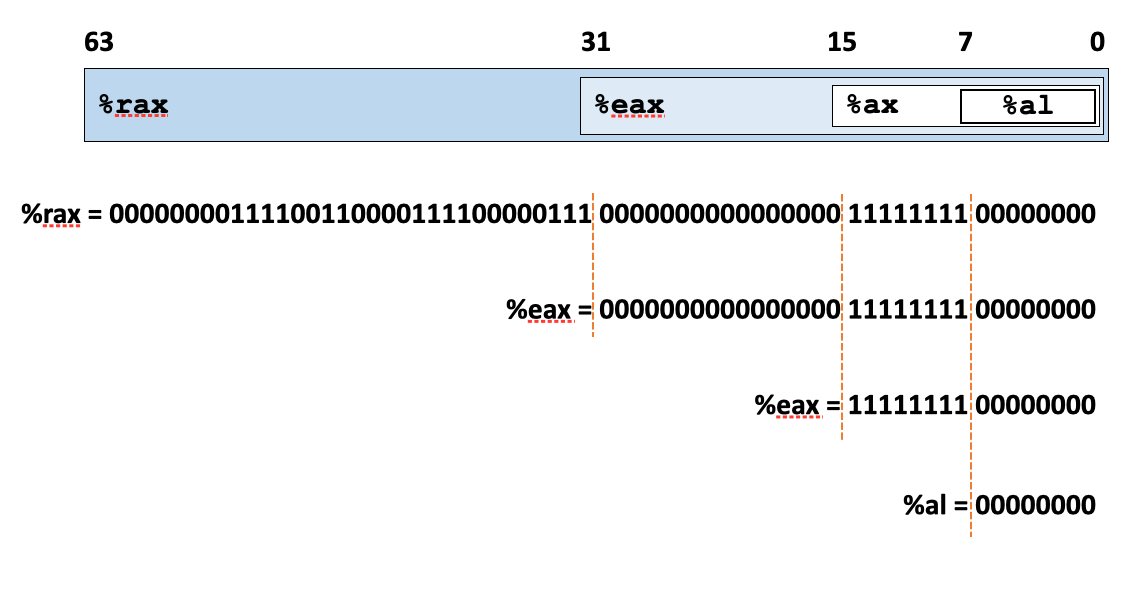
Instruction
Moving data
movq,Source, Dest
- Source values can be constants, from registers or from memory「源值可以是常量,可以是寄存器中的值,也可以是存储器中的值」
- Results can be stored in either registers or memory「结果可以存储在寄存器或存储器中「结果可以存储在寄存器或存储器中」
- Moving different data sizes: movq, movl, movw, movb(依照来源和目的地的最大长度,使用相应的指令」
Operand Types
Operand Types (basically, where data are stored)
Immediate: Constant integer data
- Example: $ 0x400,$-533
- Like C constant, prefixed with
$in the assembly code
像C常量一样,在汇编代码中以$开头
Register: One of 16 integer registers
Example: %rax, %r13
But %rsp reserved for special use
- Others have special uses for particular instructions
Memory: 8 consecutive bytes of memory at address given by register
Simplest example: (%rax)
- Various other “address modes”
- 实现原理:指针
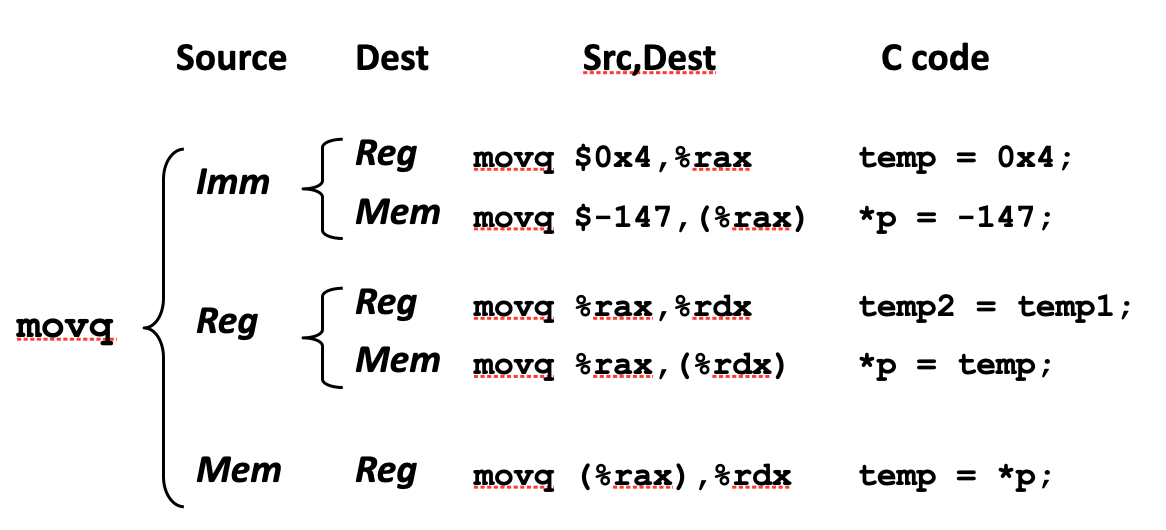
Cannot do memory-memory transfer with a single instruction!
Some arithmetic operations
Two Operand Instructions
Format Computation
addq Src,Dest Dest = Dest + Src
subq Src,Dest Dest = Dest − Src
imulq Src,Dest Dest = Dest * Src
salq Src,Dest Dest = Dest << Src Also called shlq
sarq Src,Dest Dest = Dest >> Src Arithmetic
shrq Src,Dest Dest = Dest >> Src Logical
xorq Src,Dest Dest = Dest ^ Src
andq Src,Dest Dest = Dest & Src
orq Src,Dest Dest = Dest | Src
Watch out for argument order!
No distinction between signed and unsigned int
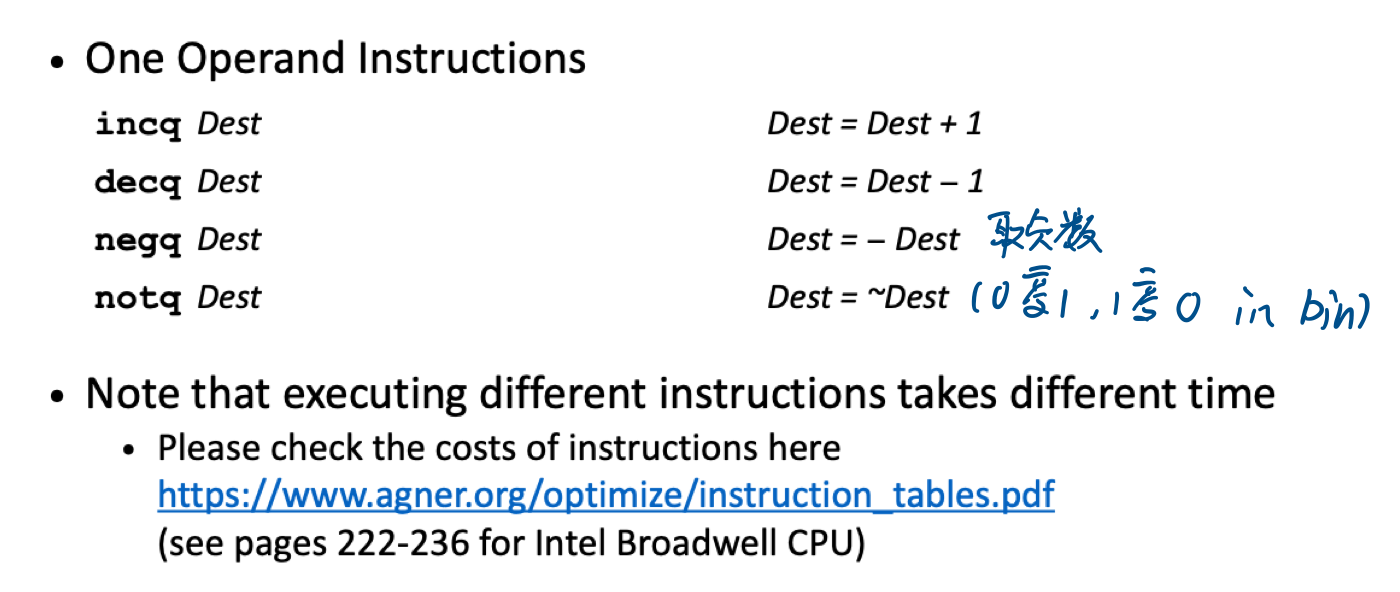
Leaq
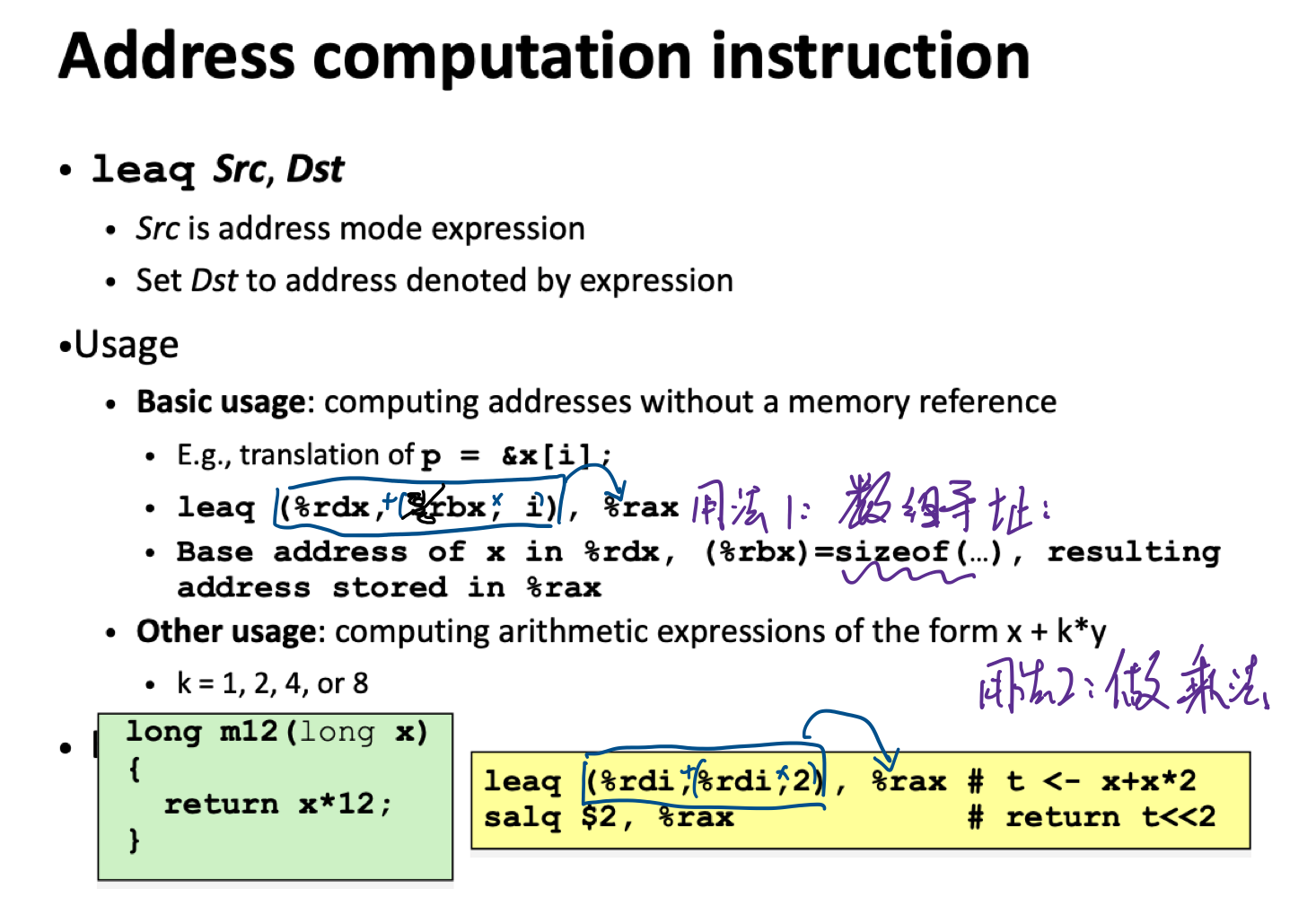
Memory addressing
simple modes
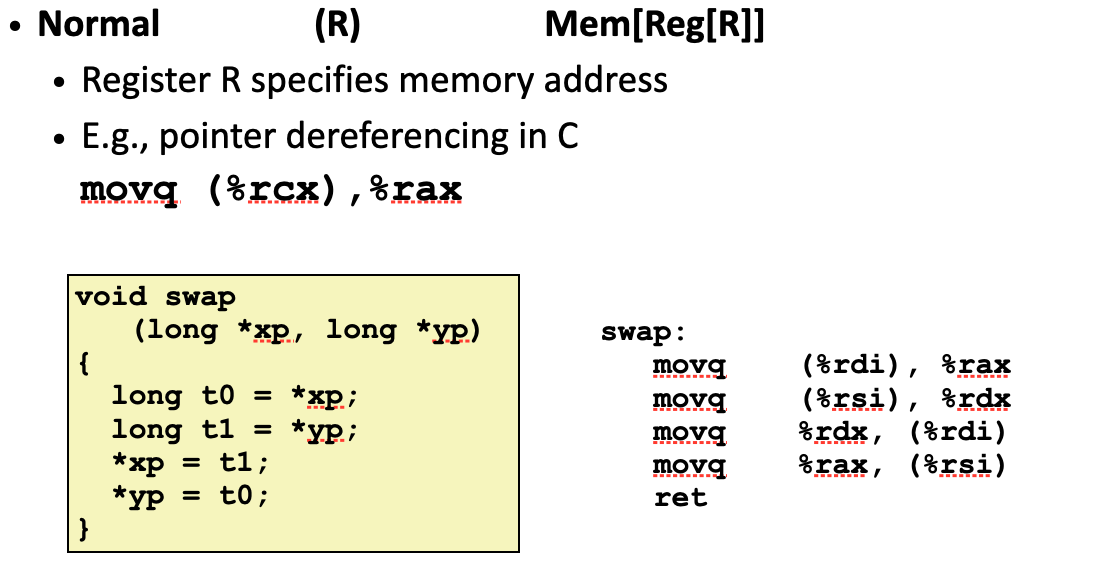
Complete memory addressing modes
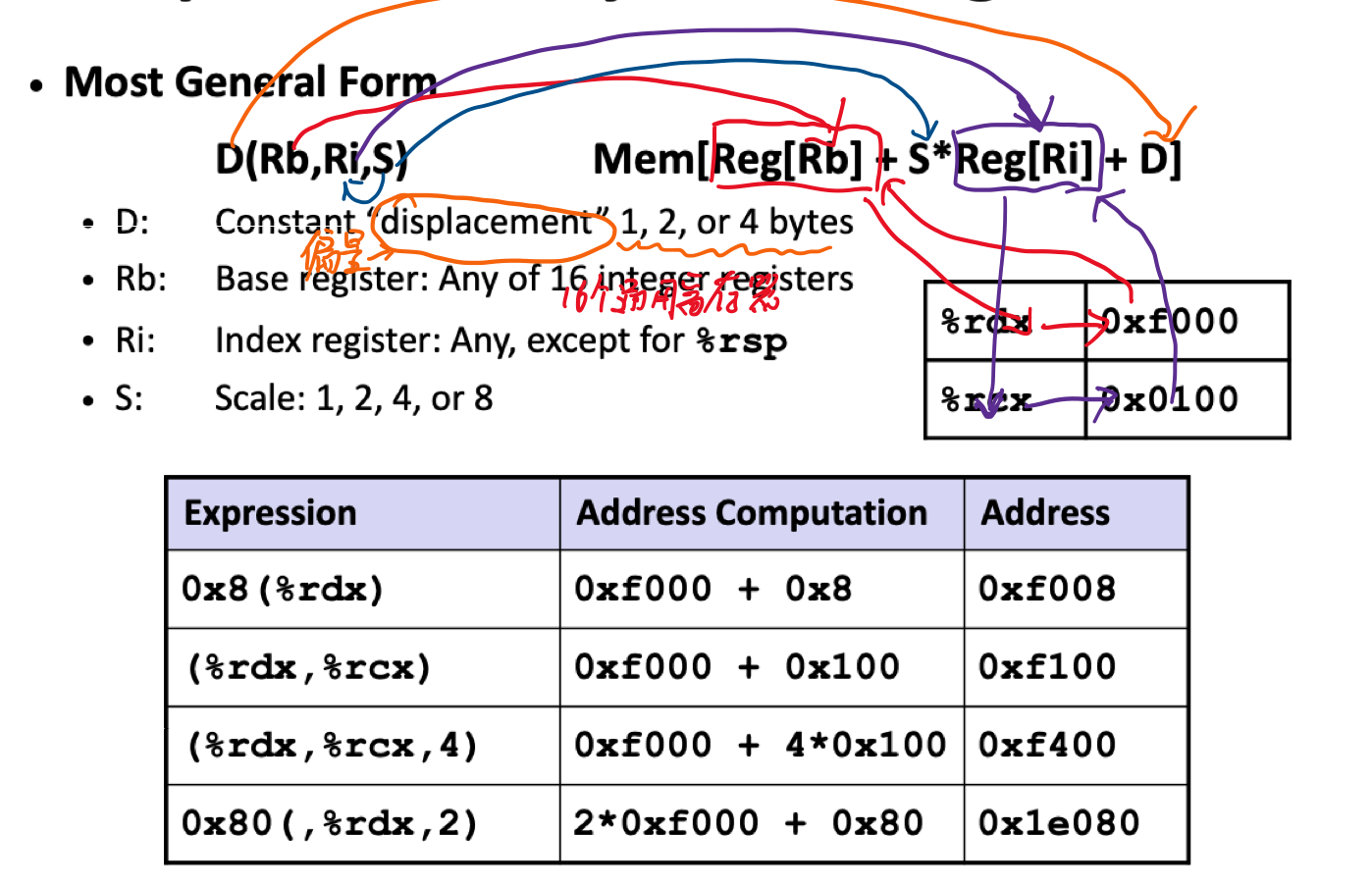
引用
- COMP1411@Polyu PowerPoint